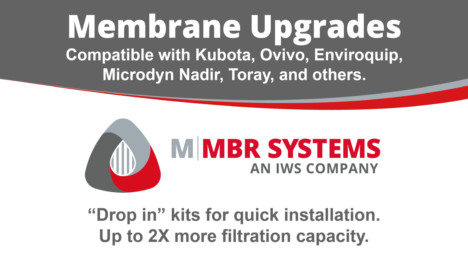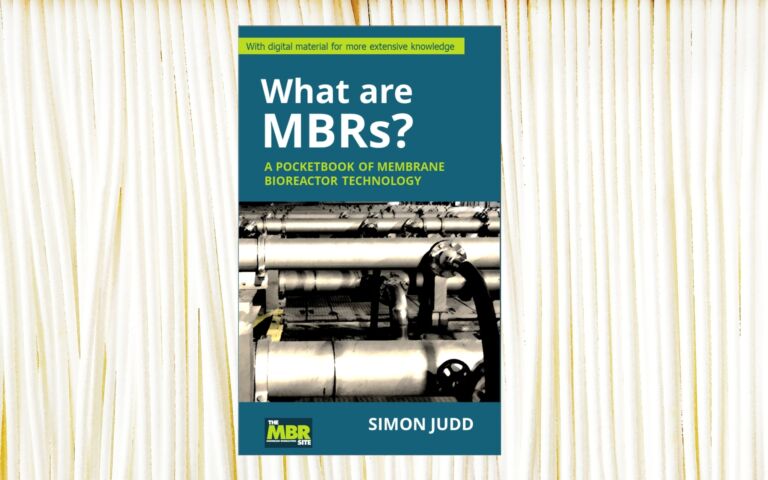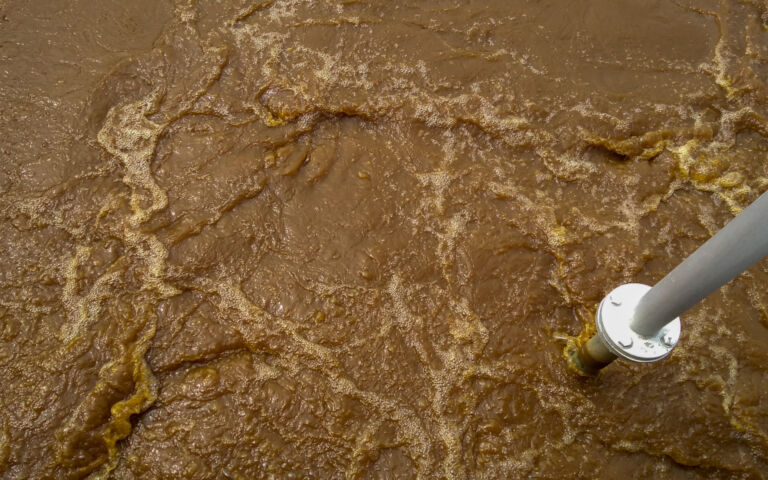Trace organic compounds − TrOCs

Trace organic compounds, for which the abbreviations TrOCS and TOrCS have both been assigned, encompass a wide range of organic materials which are considered to have adverse health and enviromental impacts even at very low concentrations. Categories for these compounds include:
- Pharmaceuticals and Personal Care Products (PPCPs): This includes prescription and over-the-counter drugs, as well as ingredients in personal care and cosmetic products
- Endocrine Disruptors: Substances, including certain pesticides, industrial chemicals, and plasticisers, that can interfere with the endocrine system and affect hormone function in living organisms
- Per- and Polyfluoroalkyl Substances (PFAS): Synthetic chemicals (also known as ‘forever chemicals’ because of their persistence in the environment) which are used in a wide range of products for their chemically inert properties and water resistance
- Pesticides and Herbicides: Agricultural chemicals, including pesticides and herbicides, having potential environmental impact and health risks
- Flame Retardants: Chemicals, including polybrominated diphenyl ethers (PBDEs), which are added to materials to reduce their flammability risk of fire and which persist in the environment and could potentially adversely affect human health and the environment
- Industrial Chemicals: Various organic chemicals used in industrial processes, such as solvents, plasticizers, and detergents
- Surfactants: Surface-active agents, commonly found in domestic detergents and cleaning products
- Alkylphenols: Compounds often used in the production of detergents
- Polycyclic Aromatic Hydrocarbons (PAHs): Compounds containing multiple connected benzene rings which can arise from the incomplete combustion of fossil fuels, and
- Illicit Drugs: Residues of illicit drugs, such as cocaine and methamphetamine.
Most of the research into the removal of TrOCS has focused on PPCPs. The extent to which these compounds are removed by a biological process depends on both the TrOC biodegradability and the intensity of the process, reflected by the concentration of active microorganisms in the reactor and the residence time.
It would also be expected for removal to be greater for:
- reactors offering a larger microbiologically-active surface area, and
- compounds having a higher affinity for the biological solids than for the water.
This relative affinity of the PPCP for the solids over the water is normally inferred from the octanol−water partition coefficient D. Whilst some studies have demonstrated an approximate correlation between a high D value and TrOC percentage removal, in general the correlation is poor (Fig. 1).
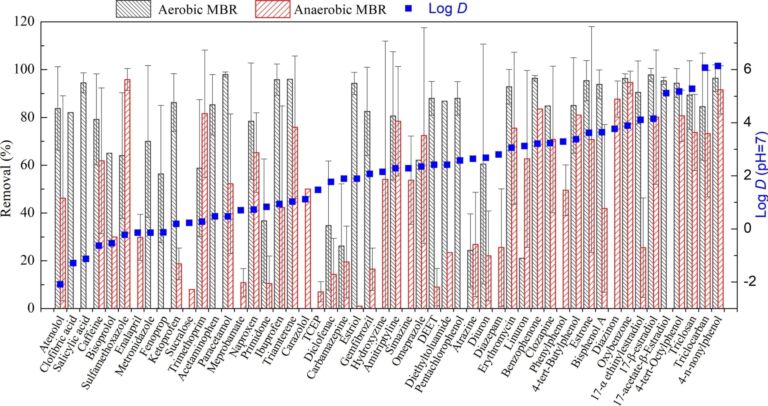
Over a broad spectrum of TrOCs and across a number of studies removal by conventional wastewater treatment ranges from 10% to close to 100% (Fig. 2). As expected, removal tends to increase with increasing biodegradability and increasing affinity for the biological solids (which roughly corresponds to hydrophobicity). The most challenging compounds are those recognised as being highly biorefractory, and include atrazine, a herbicide, and the pharmaceuticals carbamazepine and diclofenac.
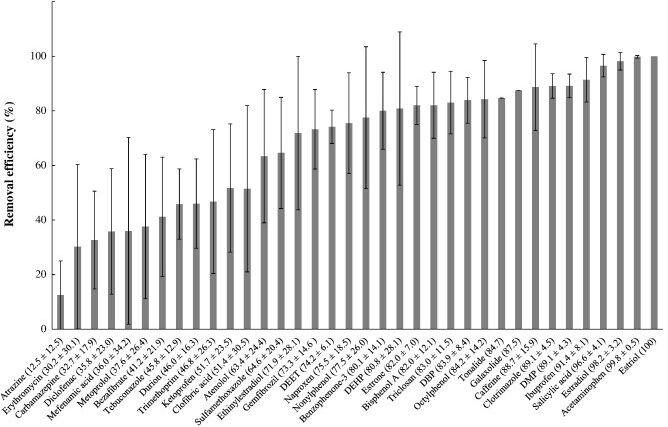
Comparison between the conventional activated sludge (CAS) and the MBR technologies have indicated no consistently higher degradation rates for the MBR (Fig. 3). Removal of the most biorefractory of the TrOCs remains challenging.
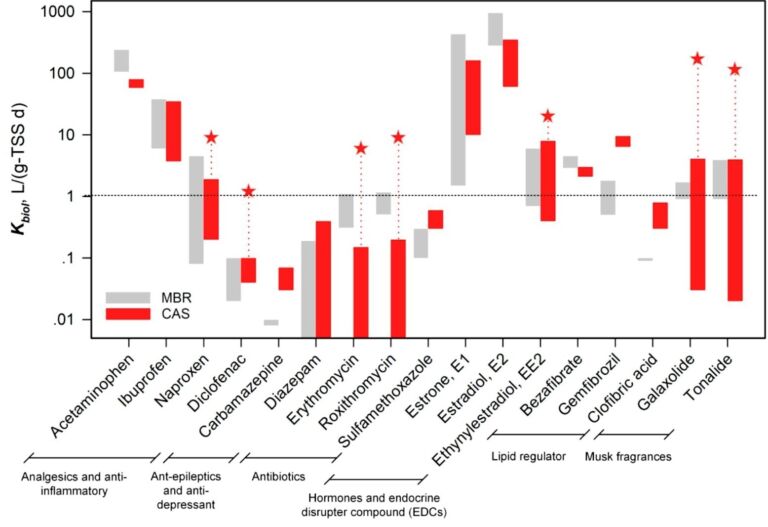
A number of studies have indicated that fixed film processes appear to be amongst the most effective at reducing levels of TrOCs in wastewater. A few studies investigating the impact of the addition of media – both plastic media used for classical media processes and powdered activated carbon – to MBRs have demonstrated enhanced removal over the MBR alone. MBBR−MBR hybrid processes may therefore offer the most effective modification of conventional wastewater treatment for substantially improving the removal of biorefractory TrOCs.



